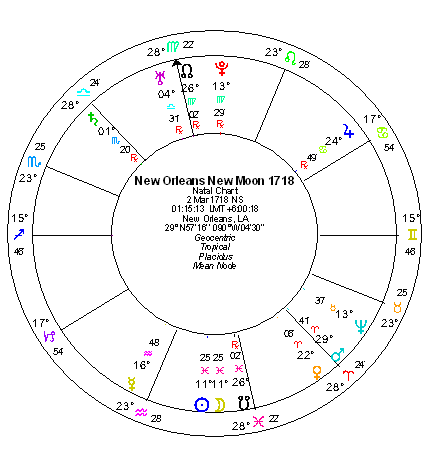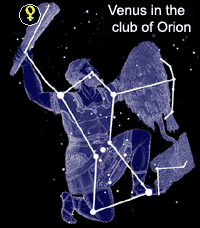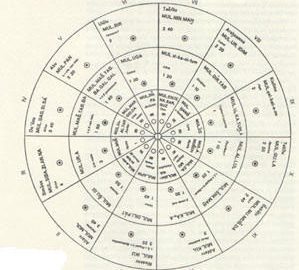Darrelyn Gunzburg
September 2005
A city of jazz, currently filled with the drone of rescue helicopters. A city surrounded by water, currently filled with water. A city of King Cakes,café au lait, beignets, muffuletta sandwiches, gumbo and red beans ‘n’ rice, currently cooking in the heat and humidity of summer.
The decision to found Nouvelle-Orléans or New Orleans (named for the French regent, the Duc d’ Orléans) was made in Paris in 1717. Jean Baptiste LeMoyne, Sieur de Bienville, the man also responsible for the foundation of the city and who became the first governor of Louisiana, envisaged it as a “port of deposit” or transhipment centre, for future trade from upriver in the Mississippi Valley. The Encyclopaedia Britannica [1] cites March 1718 as the month and year for when clearing of the underbrush began. No specific date has been recorded. Therefore it is reasonable to consider the new moon chart in March – 2nd March, 1718, 1:15:13 AM – as the beginning of this whole new venture.
New Orleans was built to do business. In an era before railways, highways, and air travel, most of the nation’s commerce flowed along the Mississippi, sweeping cotton, grain, sugar and a raft of other commodities to New Orleans’ door.
But New Orleans is more than a trading port. As Howard Jacobson recently wrote [2], New Orleans is “…not only a way of life but a way of thinking about life…”.
A small measure of the wealth of creative talent that has emerged from this city over the centuries includes:
Louis Moreau Gottschalk (1829-1869) – pianist and composer
Jelly Roll Morton (1890-1941) – jazz musician and composer
Louis Armstrong (1901-1971) – trumpet player and singer
Lillian Hellman (1905-1984) – playwright
Ray Walston (1914-2001) – actor
Al Hirt (1922-1999) – trumpeter
Truman Capote (1924-1984) – novelist
Fats Domino (1928 -) – popular exponent of the classic New Orleans R&B sound
Jerry Lee Lewis (1935-) – singer
Ellen DeGeneres (1956-) – comedienne and talk show host
Wynton Marsalis (1961-) – leading jazz and classical player
This cornucopia of creative talent that journeys out from New Orleans to stand on the world stage is expressed in the new moon chart of 1718 as an alternative Venus (detriment) square the exalted Jupiter.

As if in confirmation of this, Starlight tells us that Venus has only one fixed star linked with her brilliant appearance as an evening star that March new moon and it happens to be the brightest star in the sky.
Sirius rising as Venus is Culminating orb 01 mins 38 secs –
The poet, the artist or the talented musician
Natally Venus in the sign of Aries, its detriment, square to Jupiter in the sign of Cancer, its exaltation. So we could say that New Orleans rushes headlong into socialising and networking (Venus in Aries), actively seeking challenges (cardinal square/Venus in Aries) and optimistically believing all will be well (Venus square Jupiter). To a certain degree this is the case, since Jupiter is exalted and suggests that, as long as New Orleans can keep her finger on the pulse of her social contacts, then she gains success from them. If, however, New Orleans allows her social networks to foment aggression and confrontation (Venus is in Aries) this will cause her difficulties. But if she allows her Venus to stretch, stimulate, arouse and inspire her and to mix that with some form of an alternative flavour, then linked with the exalted Jupiter, and the star of Sirius, the optimism and joyfulness becomes artistically inspirational.
Historically we know that the first residents of New Orleans were a mix of Canadian backwoodsmen, company craftsmen and troops, convicts, slaves, women of uncertain virtue and indigents [3], hence this alternate flavour was fulfilled in the eighteenth century. This theme then continued through the city’s evolution with the birth of its distinctive culture and music. It also gave birth to Ellen DeGeneres’ whose television character “Ellen” came out in 1997 as openly gay, the first openly gay character starring in a television show.

However, there are other points to make about Venus in this new moon chart of 1718. Venus is almost at her greatest elongation in this chart, so she is seen as a bright evening star, radiating all that she touches. In developing all of her alternate themes, she radiates great light into the social word but being in detriment she needs the help and support of others in order to function effectively in the world. And on that night of the new moon in March of 1718, as Venus culminated, in New Orleans, the great brilliant star of Sirius rose (image right).
Sirius is one of the great stars of the sky. The Egyptians called it The Shining One or The Scorcher and it was linked with the life-giving waters of the Nile.
Now any city built in a drained delta is liable to flooding and, additionally, New Orleans is sited in a hurricane pathway. Brady, inStarlight tells us Sirius is the marker of great deeds where, through the individual being sacrificed to the collective expression, the mundane can become sacred, where the small action of the individual may have a large effect on the collective.
With Sirius linked to New Orleans’ Venus in the new moon chart of 1718, and with Venus being in detriment, the wreckage caused by the hurricane has forced her to demand help and support from the USA administration. The city known for its ”thousand musical architectural, literary, culinary and multi-ethnic associations” [4] is now expressing the other side of the brilliance of Sirius in paran with her Venus: that of being drowned in order to make a collective statement.
We could postulate that the sacrifice of the city is bringing to attention the inadequacy of New Orleans’ social services (Venus). For too long the outside world has gloried in her creativity. Now Sirius is insisting on a redress, at the cost of the lives of her citizen. Yet Sirius is the blast of energy that can burn or achieve things that were never thought possible. So Sirius promises that New Orleans will rise from the waters and so we can anticipate the continuation of the alternative music and art – but now underscored with greater social justice – that will result.
[1] The Encyclopaedia Britannica (1986) University of Chicago, Vol. 24, p.864
[2] The Independent, Saturday 3rd September, 2005, p.42
[3] The Encyclopaedia Britannica, ibid.
[4] The Independent, ibid.




